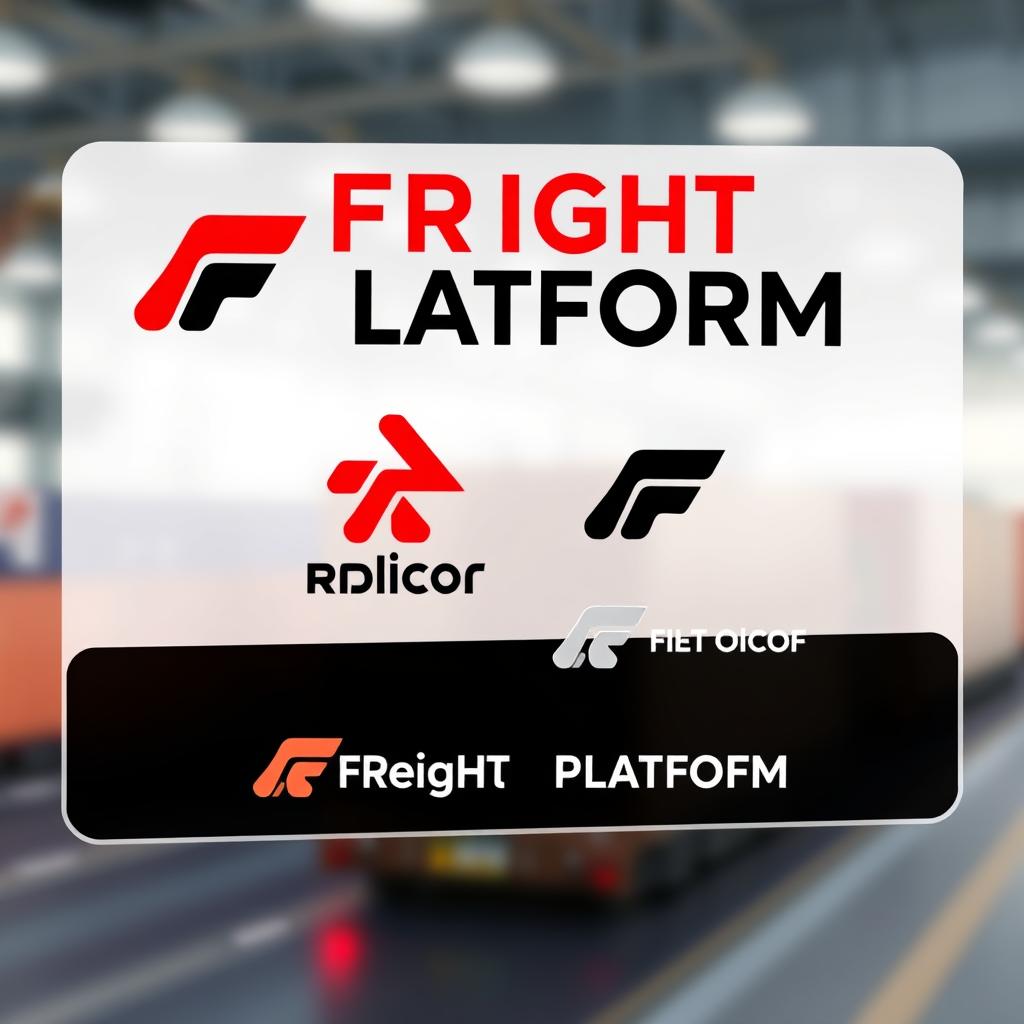The Rise of Digital Freight Matching Platforms: Revolutionizing Logistics
In recent years, the logistics industry has undergone a significant transformation, thanks to the rise of digital freight matching platforms. These innovative solutions have disrupted traditional freight brokerage models, streamlining operations and increasing efficiency for shippers and carriers alike. As the demand for faster, more cost-effective shipping continues to grow, it’s crucial to understand the best digital freight platforms available in the market today.
In this comprehensive guide, we’ll dive deep into the world of digital freight matching platforms, comparing the top contenders and helping you make an informed decision for your business. Whether you’re a shipper looking to optimize your supply chain or a carrier seeking to maximize your fleet’s potential, this article will provide valuable insights into the digital freight revolution.
Understanding Digital Freight Matching Platforms
Before we delve into the comparison of the best digital freight platforms, it’s essential to understand what these platforms are and how they work.
Digital freight matching platforms, also known as digital freight marketplaces or online freight exchanges, are technology-driven solutions that connect shippers with carriers in real-time. These platforms leverage advanced algorithms, machine learning, and data analytics to match freight loads with available trucks, optimizing routes and reducing empty miles.
Key Features of Digital Freight Matching Platforms
- Real-time load matching
- Automated pricing and bidding
- Track and trace capabilities
- Digital documentation and paperless transactions
- Data analytics and reporting
- Integration with existing transportation management systems (TMS)
By automating many of the manual processes involved in traditional freight brokerage, these platforms offer numerous benefits to both shippers and carriers:
Benefits for Shippers
- Reduced transportation costs
- Increased visibility and control over shipments
- Access to a wider pool of carriers
- Improved efficiency and faster booking processes
- Real-time tracking and analytics
Benefits for Carriers
- Reduced empty miles and improved asset utilization
- Faster payment cycles
- Access to a broader range of shipping opportunities
- Simplified paperwork and documentation
- Enhanced route optimization
Now that we have a solid understanding of digital freight matching platforms, let’s compare some of the best options available in the market.
Top Digital Freight Matching Platforms Comparison
In this section, we’ll take a closer look at some of the leading digital freight matching platforms, comparing their features, strengths, and potential drawbacks.
1. Uber Freight
Uber Freight, launched by the ride-sharing giant Uber, has quickly become one of the most recognizable names in the digital freight matching space.
Key Features:
- User-friendly mobile app for carriers
- Instant upfront pricing for shippers
- Facility ratings and reviews
- Automated detention payments
- Real-time tracking and notifications
Pros:
- Large network of carriers and shippers
- Transparent pricing model
- Intuitive user interface
- 24/7 support
Cons:
- Limited customization options for enterprise clients
- May not be suitable for specialized or oversized freight
2. Convoy
Convoy is another major player in the digital freight matching arena, known for its focus on sustainability and efficiency.
Key Features:
- Automated bidding and pricing
- Machine learning-powered load matching
- Sustainability metrics and reporting
- Bundled shipments for improved efficiency
- Flexible drop and hook program
Pros:
- Strong emphasis on reducing empty miles and emissions
- Advanced analytics and insights
- Robust API for integration with existing systems
- Dedicated account management for large shippers
Cons:
- Limited international shipping options
- May have a steeper learning curve for some users
3. Transplace
Transplace offers a comprehensive suite of logistics solutions, including a digital freight matching platform.
Key Features:
- Multi-modal transportation management
- Advanced optimization algorithms
- Real-time visibility and analytics
- Customizable dashboards and reporting
- Carrier compliance management
Pros:
- Comprehensive end-to-end logistics solution
- Extensive experience in the transportation industry
- Strong focus on data-driven insights
- Scalable for businesses of all sizes
Cons:
- May be more complex than some standalone digital freight matching platforms
- Pricing may be higher for smaller shippers
4. Loadsmart
Loadsmart is a technology-driven freight broker that leverages artificial intelligence to streamline the shipping process.
Key Features:
- Instant quoting and booking
- AI-powered carrier matching
- Predictive analytics for capacity and pricing
- Integration with major TMS providers
- Specialized solutions for various industries
Pros:
- Advanced AI and machine learning capabilities
- Flexible API for easy integration
- Strong focus on data security and privacy
- Dedicated customer success teams
Cons:
- May have limited coverage in some rural areas
- Some users report occasional glitches in the platform
5. C.H. Robinson’s Navisphere
C.H. Robinson, a global leader in third-party logistics, offers its digital freight matching platform called Navisphere.
Key Features:
- Global transportation management
- Real-time visibility and tracking
- Automated carrier matching and tendering
- Business intelligence and reporting tools
- Integration with major ERP systems
Pros:
- Extensive global network of carriers and partners
- Comprehensive suite of logistics services
- Strong reputation and industry experience
- 24/7 support and dedicated account management
Cons:
- May be more expensive for smaller shippers
- Some users report a steeper learning curve
Factors to Consider When Choosing a Digital Freight Matching Platform
When evaluating digital freight matching platforms for your business, it’s essential to consider several factors to ensure you select the right solution for your needs.
1. Network Size and Coverage
The size and geographical coverage of a platform’s carrier network are crucial factors to consider. A larger network typically means more options for finding available capacity and competitive rates. Look for platforms that have a strong presence in the regions where you frequently ship.
2. Pricing Model and Transparency
Different platforms may have varying pricing models, such as flat fees, percentage-based commissions, or subscription plans. Evaluate the pricing structure of each platform and ensure it aligns with your budget and shipping volume. Transparency in pricing is also essential to avoid unexpected costs.
3. User Experience and Ease of Use
A user-friendly interface can significantly impact your team’s productivity and adoption of the platform. Look for solutions that offer intuitive dashboards, mobile apps, and easy-to-use booking processes.
4. Integration Capabilities
Consider how well the platform integrates with your existing systems, such as transportation management systems (TMS), enterprise resource planning (ERP) software, or warehouse management systems (WMS). Seamless integration can streamline your operations and improve overall efficiency.
5. Data Analytics and Reporting
Access to robust data analytics and reporting tools can provide valuable insights into your shipping operations, helping you make informed decisions and optimize your supply chain. Look for platforms that offer customizable dashboards and in-depth reporting capabilities.
6. Customer Support and Service Level Agreements (SLAs)
Evaluate the level of customer support provided by each platform, including availability, response times, and the expertise of support staff. Review the platform’s service level agreements to ensure they meet your requirements for uptime, issue resolution, and performance metrics.
7. Scalability and Flexibility
Choose a platform that can grow with your business and adapt to changing needs. Consider factors such as the ability to handle increased shipping volume, support for multiple transportation modes, and flexibility in contract terms.
8. Security and Compliance
Ensure that the platform you choose adheres to industry standards for data security and compliance. Look for features such as encryption, secure authentication, and compliance with relevant regulations like GDPR or CCPA.
The Future of Digital Freight Matching Platforms
As technology continues to advance, digital freight matching platforms are likely to evolve and offer even more sophisticated features and capabilities. Some trends to watch for in the future include:
1. Increased Use of Artificial Intelligence and Machine Learning
AI and machine learning algorithms will become more advanced, leading to improved load matching, predictive analytics, and dynamic pricing models. This will result in even greater efficiency and cost savings for both shippers and carriers.
2. Blockchain Integration
The integration of blockchain technology into digital freight matching platforms could revolutionize transparency, security, and traceability in the supply chain. Blockchain has the potential to streamline documentation processes, reduce fraud, and improve payment systems.
3. Internet of Things (IoT) and Telematics
As IoT devices and telematics systems become more prevalent in the transportation industry, digital freight matching platforms will likely incorporate this data to provide more accurate real-time tracking, predictive maintenance, and route optimization.
4. Sustainability Focus
With increasing emphasis on environmental sustainability, digital freight matching platforms are likely to incorporate more features focused on reducing carbon emissions, optimizing routes for fuel efficiency, and promoting eco-friendly transportation options.
5. Enhanced Collaboration and Network Effects
As these platforms continue to grow and attract more users, the network effects will lead to increased collaboration between shippers, carriers, and other stakeholders in the supply chain. This could result in new opportunities for shared transportation, consolidated shipments, and improved asset utilization.
Conclusion: Embracing the Digital Freight Revolution
Digital freight matching platforms have undoubtedly transformed the logistics industry, offering unprecedented levels of efficiency, transparency, and cost-effectiveness. As we’ve explored in this comprehensive comparison, there are several strong contenders in the market, each with its own unique strengths and features.
When choosing the best digital freight platform for your business, it’s crucial to carefully evaluate your specific needs, consider the factors we’ve discussed, and potentially trial multiple solutions before making a final decision. Remember that the right platform can significantly impact your bottom line, improve customer satisfaction, and give you a competitive edge in today’s fast-paced logistics landscape.
As technology continues to evolve, we can expect digital freight matching platforms to become even more sophisticated, offering new features and capabilities that will further streamline the shipping process. By embracing these innovative solutions now, you’ll be well-positioned to adapt to future changes and stay ahead of the curve in the ever-evolving world of logistics.
Are you ready to revolutionize your shipping operations with a cutting-edge digital freight matching platform? Don’t let outdated processes hold your business back. Take the first step towards optimizing your supply chain by exploring the solutions we’ve discussed in this article. Contact us today for personalized advice on selecting the best digital freight platform for your unique needs, and let’s work together to propel your logistics operations into the future!







